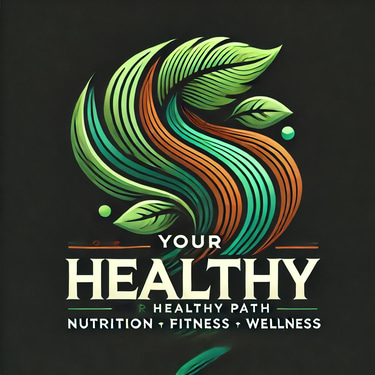Top Nutrition Trends 2025: Boost Health & Wellness
Discover the top nutrition trends for 2025! From AI-driven diets to sustainable superfoods, learn how to future-proof your health.
WELLNESSNUTRITIONFASTING
by katesen
3/15/20253 min read


1. Plant-Based Eating
The Rise of Plant-Based Diets
Plant-based diets are gaining immense popularity. They’re not only beneficial for individual health but also for the environment. By reducing meat consumption and increasing plant intake, you can lower your risk of chronic diseases and contribute to a more sustainable planet.
How to Embrace It:
Incorporate More Fruits and Vegetables: Aim for a colorful plate by adding a variety of fruits and vegetables to your meals.
Try Meat Alternatives: Explore plant-based proteins like lentils, chickpeas, and innovative meat substitutes that replicate the taste and texture of meat.
2.Intermittent Fasting 2.0
Fasting 2.0 is an innovative approach to intermittent fasting that combines traditional fasting methods with modern science to optimize health and wellness. By focusing on flexible eating windows and nutrient timing, Fasting 2.0 helps individuals enhance their metabolic health, improve mental clarity, and increase energy levels. This versatile fasting method encourages participants to listen to their bodies, allowing for personalized experiences that cater to unique lifestyle needs. As a result, Fasting 2.0 not only promotes effective weight management but also supports overall well-being. Explore the benefits of Fasting 2.0 and discover how integrating this method into your routine can lead to sustainable health improvements.
How to Embrace It:
Understand the Basics: Familiarize yourself with the principles of Intermittent Fasting 2.0, which combines traditional fasting techniques with modern practices. Research its benefits, such as improved metabolic health, weight management, and enhanced mental clarity.
Choose Your Fasting Window: Decide on a flexible eating schedule that fits your lifestyle. Common methods include:
16/8 Method: Fast for 16 hours and eat during an 8-hour window.
5:2 Diet: Eat normally for five days and restrict calories on two non-consecutive days.
Rapid Weight loss: As a woman who was seriously overweight with all the complications an unhealthy body can bring, I embraced fasting to loose the weight and after sometime I would stall, and even started losing hair or generate body aches. I would recommend you read Fast like a girl by Dr. Mindy Pelz . It will make embracing IF( Intermittent fasting) easier and equip you with the how you can burn fat and heal the body and even balance hormones.
Listen to Your Body: Pay attention to your hunger cues and energy levels. If you feel fatigued or overly hungry, consider adjusting your eating window or the types of food you consume.
Focus on Nutrient-Dense Foods: When you do eat, prioritize whole, nutrient-rich foods like fruits, vegetables, lean proteins, healthy fats, and whole grains. This will help you feel satiated and energized during fasting periods.
Stay Hydrated: Drink plenty of water throughout the day. Herbal teas and black coffee can also be great options during fasting periods to help curb hunger and keep you hydrated.
3. Personalized Nutrition
Tailored Diet Plans
With the evolution of health technologies, personalized nutrition based on individual genetics, lifestyle, and health goals is becoming more accessible. By focusing on what works best for your body, you can optimize your nutrient intake.
How to Embrace It:
Utilize Nutrition Apps: Track your dietary habits and receive tailored recommendations using nutrition apps that analyze your data.
Consult Professionals: Work with a nutritionist to create a customized meal plan that aligns with your health objectives.
4. Functional Foods
Foods with Health Benefits
Functional foods—those that provide health benefits beyond basic nutrition—are increasingly popular. Examples include probiotics for gut health, omega-3-rich foods for heart health, and adaptogens for stress management.
How to Embrace It:
Add Functional Ingredients: Include foods like yogurt, fermentation-rich foods, nuts, seeds, and herbs with health benefits into your diet.
Educate Yourself: Learn about the benefits of various functional foods and experiment with incorporating them into your meals.
5. Sustainable and Ethical Eating
Conscious Consumption
As consumers become more aware of the impact of their food choices, sustainable and ethical eating is gaining traction. This trend emphasizes local sourcing, reducing food waste, and choosing eco-friendly products.
How to Embrace It:
Support Local Farms: Buy seasonal produce from local farmers’ markets to support sustainable agriculture.
Minimize Food Waste: Plan your meals to avoid overbuying and creatively use leftovers.
6. Technological Innovations in Food
Embracing Smart Food Tech
The intersection of technology and nutrition is increasing. From lab-grown meats to smart kitchen gadgets and technology aims to enhance our eating experiences and make healthy eating more accessible.
How to Embrace It:
Invest in Smart Kitchen Appliances: Use gadgets that can help you meal prep efficiently, track nutritional intake, and provide cooking assistance.
Explore Food Tech Products: Stay informed about emerging food technologies that align with your nutrition goals.
Conclusion
Embracing the nutrition trends of 2025 today will not only improve your overall health but also contribute to a more sustainable future. By focusing on plant-based eating, fasting, personalized nutrition, functional foods, sustainable practices, and the use of innovative technologies, you can create a balanced, health-conscious lifestyle. Don’t keep on postponing when you will make a turn around for the better; start making small changes now for a healthier tomorrow!
Wellness
Empowering you with knowledge for healthier living.
Fitness
Nutrition
+254721616602
© 2025. All rights reserved.
Affiliate Blog Disclaimer for YourHealthyPath.in
Last Updated: [1/6/2025]
At YourHealthyPath.in, we believe in transparency and building trust with our readers. This disclaimer outlines our affiliate relationships and how they impact the content you see. Please read this carefully to understand our commitments to you.
Affiliate Links & Compensation
Some links on this blog may be “affiliate links.” This means if you click on the link and purchase a product/service, we may earn a small commission at no extra cost to you. These partnerships help fund our work, allowing us to continue providing free, valuable content.
We only promote products or services we genuinely believe in, have researched, or have personal experience with. Our reviews and recommendations are always honest and unbiased, even when compensated.
FTC Compliance
YourHealthyPath.in complies with the Federal Trade Commission (FTC) guidelines for affiliate marketing. We disclose all affiliate relationships to ensure you’re fully informed about how our content is funded.
No Professional Advice
The content on this blog (including articles, reviews, and recommendations) is for informational purposes only and does not constitute professional medical, financial, or legal advice. Always consult a qualified expert before making decisions related to your health, finances, or well-being.
Amazon Associates Program
YourHealthyPath.in participates in the Amazon Services LLC Associates Program, an affiliate advertising program that allows sites to earn fees by linking to Amazon.com. As an Amazon Associate, we earn from qualifying purchases.
5Your Responsibility
While we strive to provide accurate and up-to-date information, product details, prices, and availability may change. Always verify details on the official product/service website before purchasing.
Questions?
If you have any concerns about our affiliate partnerships or content, feel free to contact us at [yourhealthpathin@gmail.com].
© YourHealthyPath.in | This disclaimer is subject to updates without notice.
